Introduction To Pig Farming
Pig farming, also known as swine farming, is the process of breeding and rearing domestic pigs for meat production or other purposes. It is a type of animal husbandry that has been in existence for centuries in different parts of the world.
One of the main advantages of pig farming is that pigs are known for their high reproduction rate which makes them a sustainable source of food and income. Additionally, pigs can be raised in different types of farming systems including free-range, intensive, and outdoor systems.
- Free-range systems: This is a type of farming system where pigs are allowed to roam freely in an open field.
- Intensive systems: This is a type of farming system where pigs are kept in indoor pens and fed on formulated diets.
- Outdoor systems: This is a type of farming system where pigs are allowed to graze outdoors and are fed on supplementary feeds.
Another advantage of pig farming is that pigs have a high feed conversion rate which means that they are able to convert feed into meat more efficiently than other animals such as cows.
Despite its many advantages, pig farming also poses certain challenges such as disease outbreaks, waste management, and market fluctuations. In order to overcome these challenges, pig farmers need to have good management practices in place such as proper biosecurity measures, waste management plans, and financial planning strategies.
| Breed | Characteristics |
|---|---|
| Duroc | Fast-growing breed with good meat quality |
| Hampshire | Excellent meat quality and good growth rate |
| Berkshire | Well-marbled meat and high-quality fat |
| Landrace | Large litter sizes and good maternal instincts |
The Advantages Of Pig Rearing
Pig rearing is an age-old occupation that has been gaining popularity over time. Many people have come to realize the numerous benefits of pig farming, making it a lucrative business venture for those who are interested. In this post, we’ll take a closer look at the advantages of pig rearing, why it’s a great choice and its importance to farmers and the economy at large.
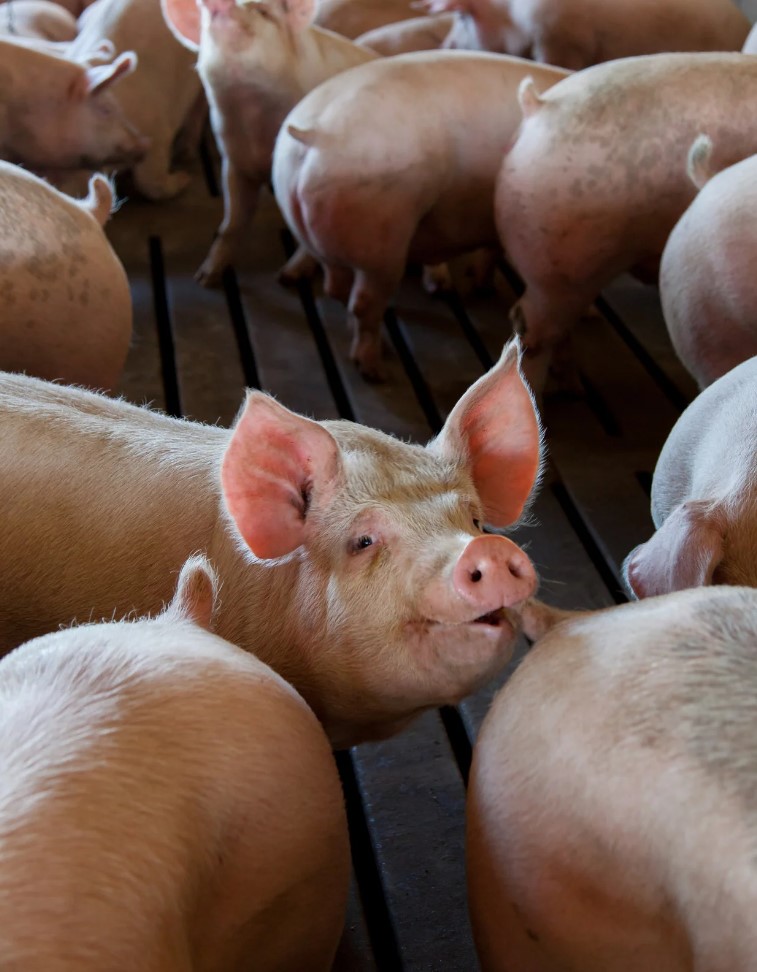
One of the primary advantages of pig rearing is that it’s a low-cost investment, especially if you’re keeping them for personal consumption. Pigs require relatively cheap housing and feeding compared to other livestock. Since they can feed on almost anything, you can save a lot of money by using locally available feeds such as kitchen scraps and forages. If you decide to sell your pigs later on, they’ll fetch a high price, allowing you to recoup your expenses and also make a profit that you can inject back into the business.
- Another advantage of pig rearing is their high reproduction rate
This means that you can quickly multiply the number of pigs on your farm without incurring a lot of expenses. Pigs start breeding at the age of six months and can produce 1-2 litters per year, with each litter containing an average of 8-12 piglets. This means that if you start with two or three sows, you can quickly build your herd to dozens or even hundreds of pigs within a few years.
- Pigs are also a great source of income and protein
The high demand for pork and pork products makes pig farming an attractive business venture. You can sell live pigs, pork products such as sausages, bacon, and ham, or even export your pigs to other countries. With the increasing global population and demand for animal protein, pig rearing provides a reliable source of food security and income for farmers.
| Advantages of pig rearing | Disadvantages of pig rearing |
|---|---|
| Low-cost investment | Outbreak of diseases |
| High reproduction rate | Odor and environmental pollution |
| Great source of income and protein | Requires expertise and knowledge |
In conclusion, pig farming has numerous advantages that make it a great choice for farmers. Low-cost investment, high reproduction rate, and being an excellent source of income and protein are just a few of the benefits that pig farming offers. While there are also several disadvantages such as disease outbreak, odor, and environmental pollution, these can be controlled through proper pig management techniques. If you’re considering starting a pig farm or expanding an existing one, pig rearing is an excellent opportunity to achieve your financial and agricultural goals.
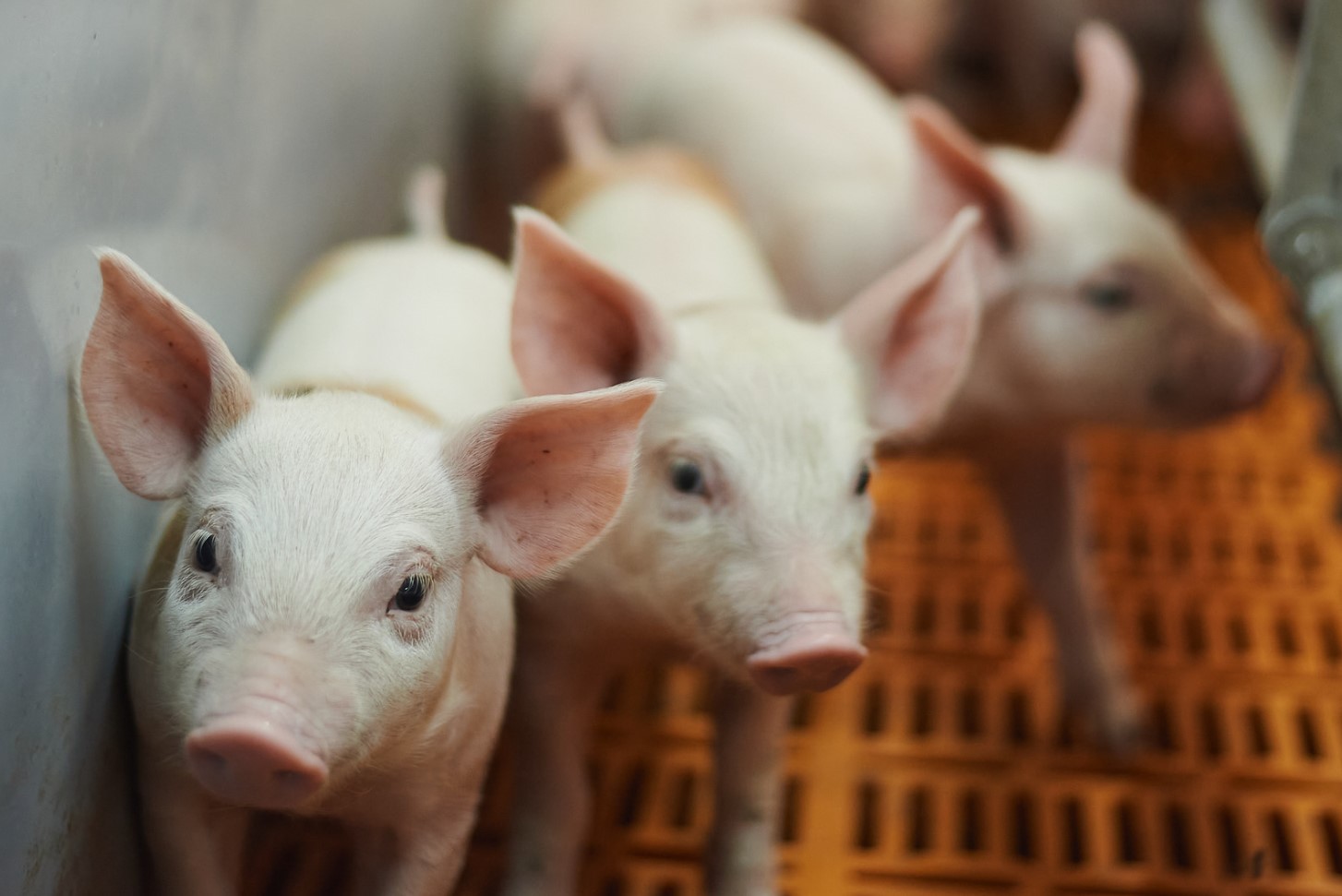
Pig Breeds And Their Characteristics
Pig farming has been a crucial part of agriculture for centuries. The rearing of pigs not only provides meat but also contributes to manure and fertilizer production. Nowadays, there are many different pig breeds that vary in size, color, and physical characteristics. Understanding the different pig breeds and their unique characteristics can help farmers make better decisions when it comes to breeding and selecting their livestock.
The following are some of the most common pig breeds and their characteristics:
- Berkshire: Originating from England, this breed is known for its black coat with white legs and snout. They are known for their high-quality meat and efficient feed conversion.
- Duroc: This breed originated in the United States and is known for its reddish-brown coat. They are known for their fast growth rate and efficient feed conversion.
- Hampshire: Originating from England, this breed has a black coat with a white belt around its shoulders. They are known for their lean meat and good mothering abilities.
In addition to the above mentioned, there are other popular breeds such as the Yorkshire, Landrace, and Chester White. Each of these breeds has unique characteristics that make them suitable for different farming systems and production goals.
When selecting a pig breed, farmers should consider factors such as feed efficiency, disease resistance, and growth rate. They should choose a breed that is well-suited to their particular farming environment, whether it be an intensive or extensive system.
In conclusion: Understanding the different pig breeds and their characteristics is an important aspect of pig farming. By selecting the right breed based on their production goals, farmers can maximize their profits and ensure the efficient use of resources. With the demand for pork increasing around the world, pig breeding and selection will continue to be an important aspect of modern agriculture.
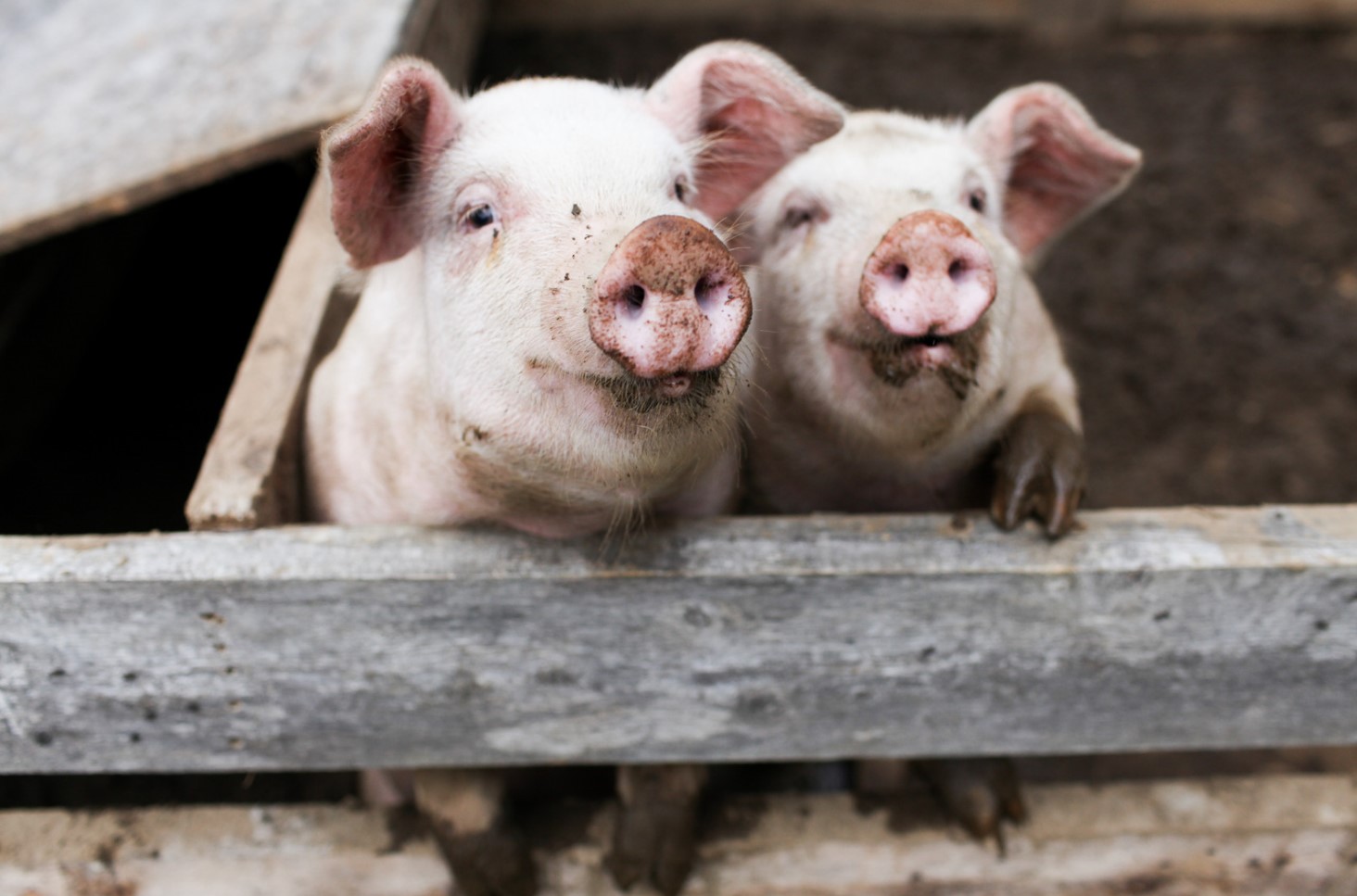
Understanding The History Of Pig Farming
Pig farming has been around for thousands of years, with evidence of domesticated pigs dating back to 5000 BC in modern-day Turkey. The ancient civilizations of China, Egypt, Greece, and Rome all practiced pig farming, using them for food, leather, and even religious sacrifices. However, it wasn’t until the 18th and 19th centuries that pig farming became more industrialized, with the introduction of new technologies and breeding practices.
One major development in pig farming history was the rise of the pork packing industry. In the late 1800s, companies such as Armour and Swift began to vertically integrate the pig farming process, controlling everything from breeding to slaughter to shipping. This led to mass production of pork products and lowered the cost of pork for consumers, making it a more popular protein source in the United States and Europe.
- China, Egypt, Greece, and Rome are some ancient civilizations that practiced pig farming.
- Swift and Armour played a significant role in the rise of the pork packing industry.
- The industrialization of pig farming led to mass production of pork products and reduced the cost for consumers.
Another important development in pig farming history was the creation of breed associations. In the 19th century, farmers began to selectively breed pigs for certain characteristics, such as meat quality and growth rate. Breed associations were created to track pedigrees and ensure that purebred pigs were being bred. Today, there are many different breeds of pigs, each with their own unique characteristics.
| Breed | Origin | Characteristics |
|---|---|---|
| Duroc | United States | Reddish-brown coat, good meat quality |
| Berkshire | United Kingdom | Black coat, marbled meat |
| Yorkshire | United Kingdom | White coat, large size, fast growth rate |
Overall, the history of pig farming is a rich and fascinating one, with many technological and societal changes shaping the industry over time. Today, pig farming is a crucial component of many economies and provides a valuable source of protein for people around the world.
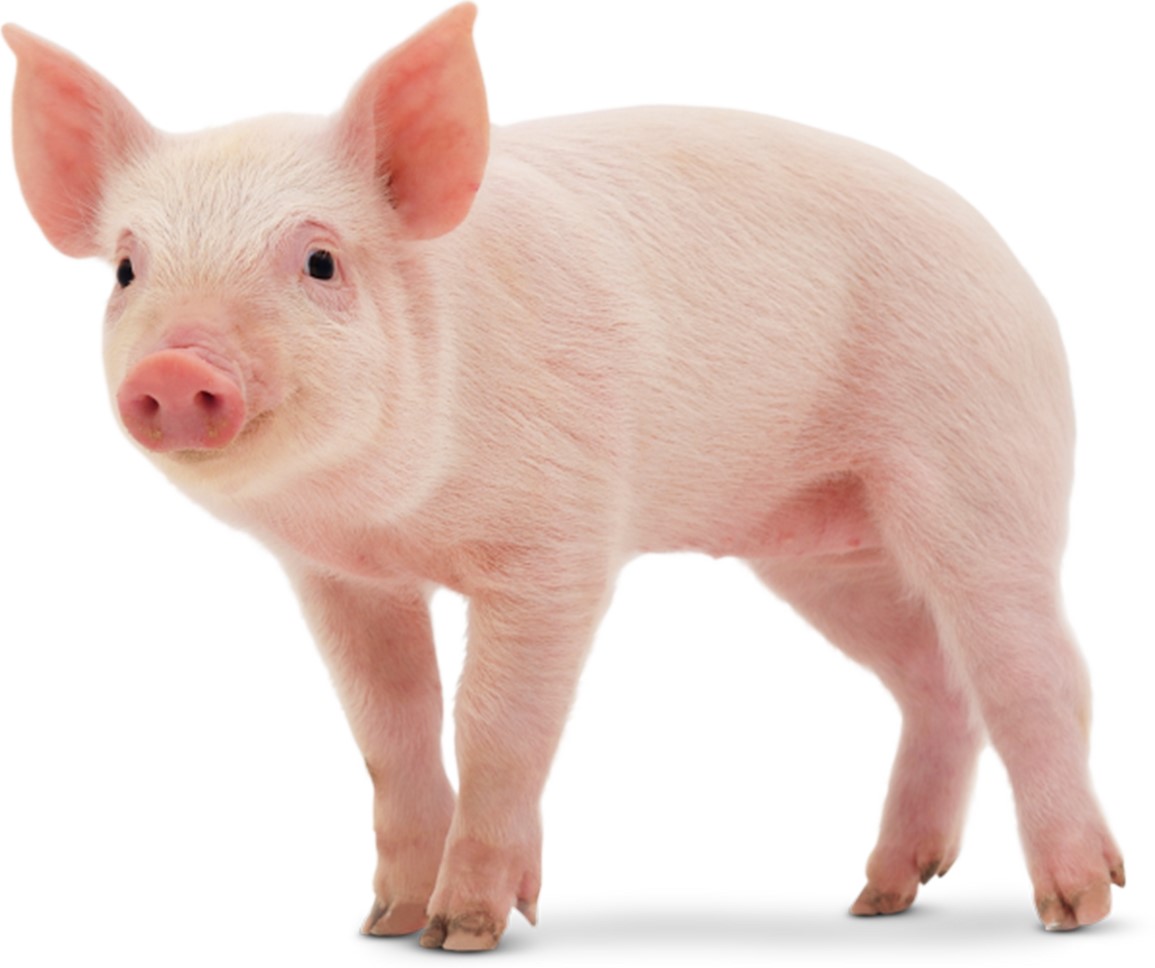
The Role Of Pig Farming İn Global Economies
When we think of pig farming, we often envision it as a local or regional industry. However, pig farming plays a significant role in global economies.
Firstly, the exportation of pork products contributes to the economic growth of many countries. According to the National Pork Producers Council, in 2019, the United States alone exported 6.5 billion pounds of pork, with a total value of $6.95 billion. This shows that the pork industry has a significant impact on the economy of the country.
Secondly, pig farming creates job opportunities. Many people are employed in various capacities, such as pig farmers, veterinary doctors, animal nutritionists, feed mill operators, and meat processors. With the growing demand for pork products, it is projected that job opportunities will continue to increase in the future.
- Pig farming contributes to global food security
Pig farming also plays a crucial role in global food security. Pork is a vital source of protein for billions of people around the world. For example, in Mexico and China, pork is a staple food that is consumed daily. This means that the demand for pork products is always high, making pig farming a necessary industry in the global food chain.
In conclusion, pig farming is not just a local or regional industry. It plays a significant role in global economies. Pig farming contributes to the economic growth of many countries, creates job opportunities, and ensures global food security. Therefore, we must appreciate and acknowledge the importance of this industry in our daily lives.
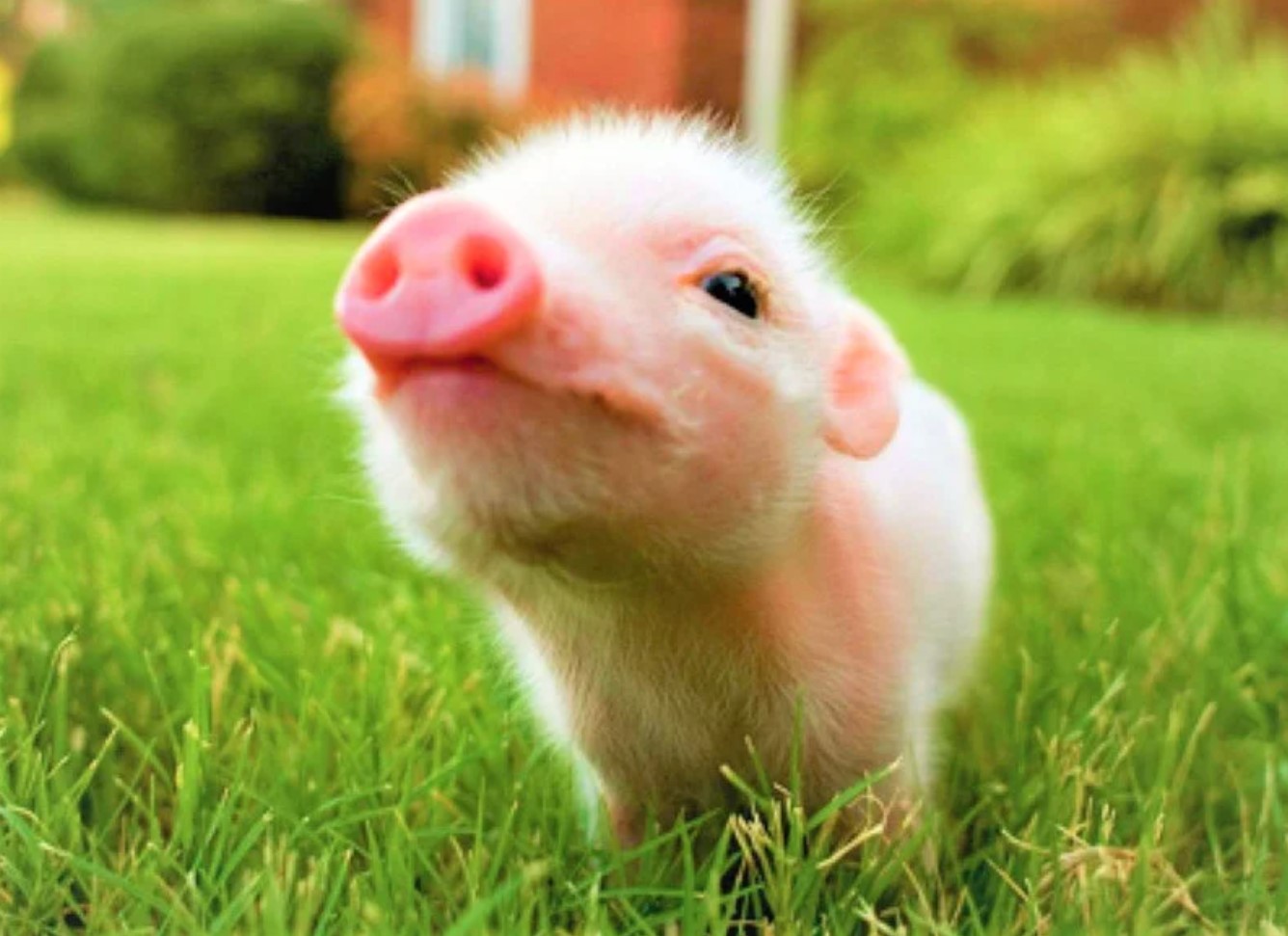
Different Types Of Pig Farming Systems
Pig farming is an important aspect of agriculture that has been practiced for centuries. Farmers all around the world have been rearing pigs as a source of meat, fat, and other products. In today’s world, pig farming has become a lucrative business for both large scale and small scale farmers. It is estimated that over a billion pigs are slaughtered every year to meet the global demand for pork.
There are different types of pig farming systems that farmers can choose from depending on their resources and goals. The most common pig farming systems are the extensive, intensive, and free-range farming systems.
- Extensive Pig Farming
Extensive pig farming is also known as outdoor or pasture-based pig farming. This type of pig farming system involves keeping pigs in large outdoor areas such as pastures, forests, or scrublands where they have access to natural resources such as vegetation and water. This system is cost-effective as it minimizes the need for specialized feeding and housing facilities. Extensive pig farming is mostly practiced by small scale farmers who rear free-range pigs.
- Intensive Pig Farming
Intensive pig farming is also known as indoor pig farming or confinement pig farming. This type of pig farming system involves keeping pigs in indoor facilities such as barns, pens, or cages where they are raised in controlled environments. Intensive pig farming allows farmers to manage their pigs’ food intake, health, and growth rate. This system is ideal for large scale pig farming as it maximizes space utilization, minimizes feed wastage, and increases piglet survival rates.
- Free-Range Pig Farming
Free-range pig farming is a type of pig farming system that allows pigs to have access to indoor and outdoor environments. This system offers the best of both worlds as the pigs have access to fresh air, natural vegetation, and the ability to engage in natural behaviors. In a free-range pig farming system, pigs are housed in indoor facilities at certain periods of the day and then released to free-range outdoor areas where they can forage, graze, and socialize.
| Type of Pig Farming System | Advantages | Disadvantages |
|---|---|---|
| Extensive Pig Farming | Cost-effective, pigs have access to natural resources, minimal environmental impacts | Low productivity, increased predation risks, high exposure to diseases and parasites |
| Intensive Pig Farming | Maximizes space utilization, minimizes feed wastage, reduces exposure to diseases and parasites | High production costs, environmental pollution, increased risk of animal welfare issues |
| Free-Range Pig Farming | Offers pigs the opportunity to engage in natural behaviors, improved piglet survival rates, reduction in stress-related problems | High production costs, low productivity, increased predation risks, high exposure to diseases and parasites |
In conclusion, pig farming is a complex process, and farmers need to choose the right type of pig farming system that suits their resources and goals. Extensive pig farming, intensive pig farming, and free-range pig farming are the most common pig farming systems, each with its own advantages and disadvantages.
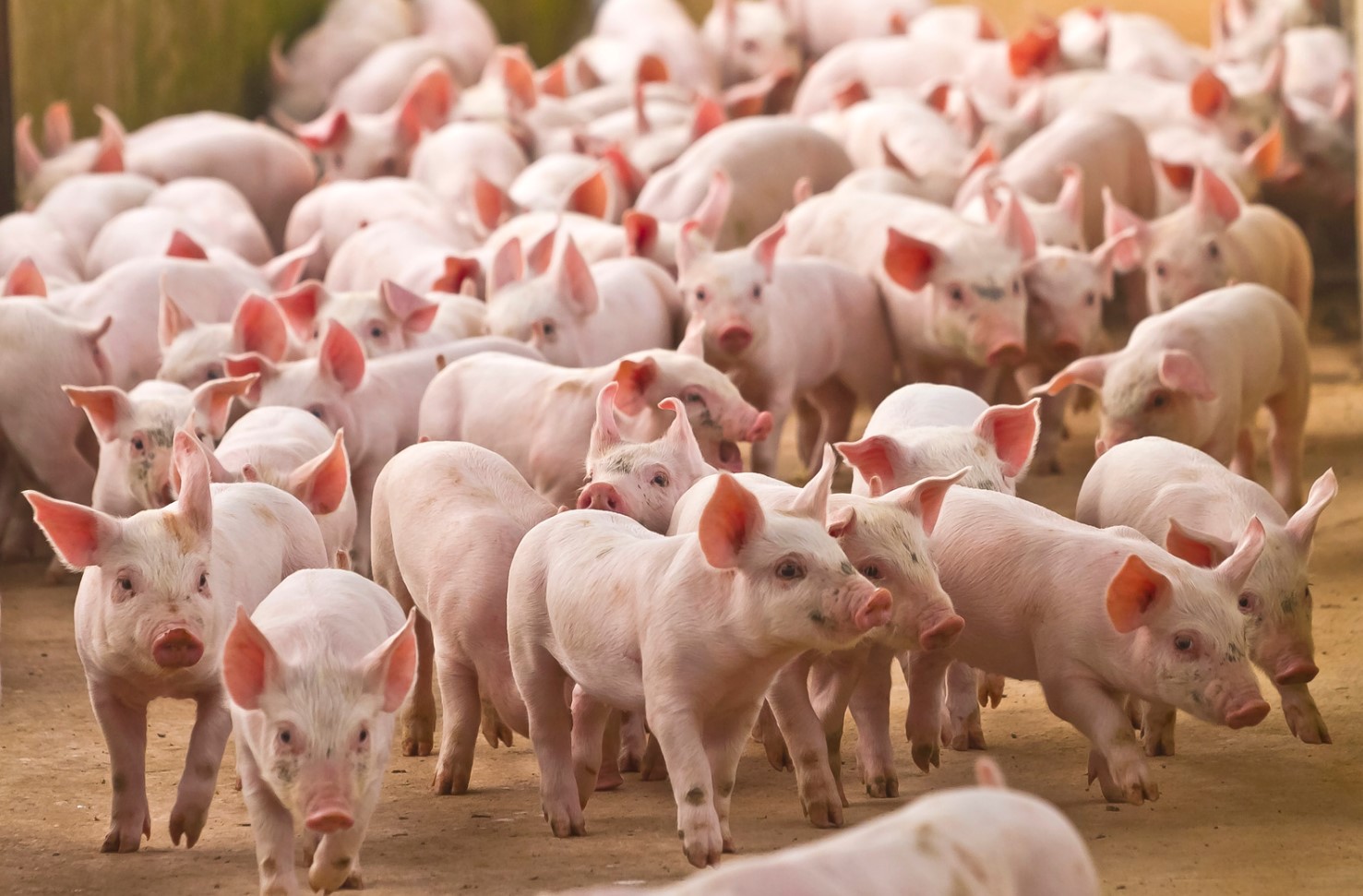
The Health İmplications Of Pig Farming
As a livestock animal, pigs offer many benefits to farmers, from meat and manure to byproducts like leather and insulin. However, there are also health implications involved in pig farming that must be carefully considered. In this post, we’ll look at some of the most important factors to keep in mind for the health and safety of both pigs and farm workers.
- Biosecurity: One of the most important aspects of maintaining pig health is preventing the spread of disease. This requires strict biosecurity measures, such as controlling access to the farm, disinfecting equipment and facilities regularly, and isolating and treating sick pigs promptly. Pigs can be carriers of zoonotic diseases, such as influenza, so the risk of transmission to humans must also be minimized.
- Nutrition: Like all animals, pigs require a balanced diet to stay healthy and productive. The right combination of protein, carbohydrates, fat, vitamins, and minerals is essential for growth, reproductive performance, and immune function. Feed sources should be carefully selected to ensure quality and safety, and all feeding practices should be monitored and adjusted as necessary.
- Housing and environment: Pigs are intelligent and social animals that need space to move around, root, and interact with each other. Overcrowding, poor ventilation, and inadequate sanitation can lead to stress, disease, and injury. Pigs are also sensitive to temperature and light, so their housing and environment should be designed to optimize their comfort and well-being.
Overall, the health implications of pig farming are many and varied, but they can be effectively managed with proper care and attention. By implementing measures such as biosecurity, good nutrition, and appropriate housing and environment, farmers can ensure the health and safety of their pigs and themselves.
How To Choose Pig Feeding And Nutrition
Feeding and nutrition are important factors to consider when it comes to pig farming. The quality of feed and the amount given can greatly affect the growth and development of pigs. Understanding the nutritional needs of pigs is crucial for farmers to ensure that they are providing the right diet to their livestock.
Pigs are omnivorous animals and require a balanced diet that consists of carbohydrates, protein, fats, vitamins, and minerals. One of the main components of their diet is corn and soybean meal, which provide energy and protein. Other common feed ingredients include barley, wheat, sorghum, and canola meal. Farmers should also provide their pigs with sufficient water, as dehydration can lead to poor health and slow growth.
- Piglets require a diet that is high in protein and is easily digestible.
- Grower pigs need a diet with a lower protein content, but still require adequate energy for growth.
- Finishing pigs need a diet that is high in energy and lower in protein to promote fat deposition.
It is important for farmers to work with a nutritionist to create a feeding plan that meets the specific needs of their pigs based on age, weight, and growth stage. In addition to commercial feed, farmers can also incorporate feed additives and supplements such as probiotics, prebiotics, and enzymes to improve digestion, boost immunity, and reduce stress levels in their pigs.
| Types of Feed | Benefits |
|---|---|
| Compound feed | Convenient and balanced diet containing all necessary nutrients |
| Supplementary feed | Added to the main diet to provide additional nutrients or treat specific health problems |
| Forage-based feed | Grasses, legumes, and other plants that provide fiber, vitamins, and minerals |
In conclusion, choosing the right feed and nutrition plan for pigs is essential for their growth and overall health. The right balance of nutrients, energy, and protein is necessary for optimal performance and efficient production. Working with a nutritionist to develop a feeding program and incorporating supplements and additives can also help improve the quality of life for pigs and increase their resistance to diseases.
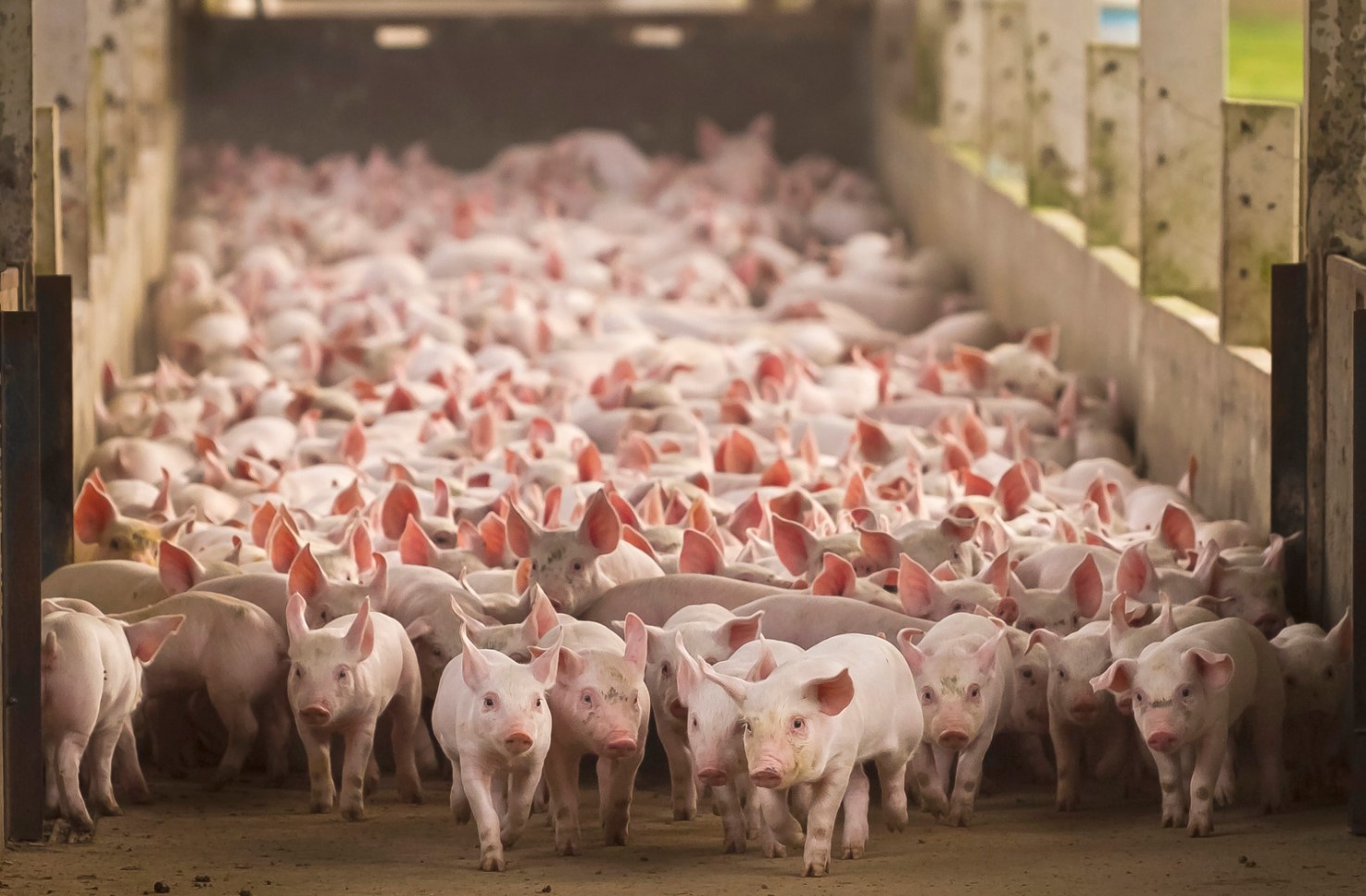
Management Techniques For Pig Farming
Management techniques are important in pig farming to ensure efficiency and profitability. As a pig farmer, it is important to manage your resources effectively, including your financial, human, and pig resources. Here are some management techniques to enhance your pig farming success:
- Record keeping: Keeping accurate and detailed records is important to monitor and track the progress of your pig farm. Record keeping includes keeping track of medications, breeding, vaccinations, and other important aspects of pig farming. This will give you an idea of what works, what doesn’t, and where to make changes.
- Invest in good genetics: Genetics play an important role in the growth and development of pigs. To ensure good genetics, invest in quality breeding stock. This will guarantee that your piglets will have desirable traits such as fast growth rates, efficient feed conversion, and meat quality.
- Proper housing: Proper housing for pigs is necessary for their health and welfare. Provide adequate space, ventilation, and temperature control to maintain the health of your pigs. Keep in mind that proper housing can also help prevent diseases and illness.
- Feed management: Feeding pigs properly is an essential aspect of pig farming. You must ensure sufficient and balanced feeding for optimum performance. Develop a feeding schedule and ensure that pigs have access to clean water at all times.
- Disease prevention and management: Preventing and managing disease is a critical aspect of pig farming to ensure profitability. You should establish good biosecurity practices and maintain good hygiene to prevent the introduction and spread of diseases. Regular veterinary check-ups and vaccinations are also important to keep your pigs healthy.
In conclusion, effective management techniques are essential for a successful pig farming business. Ensure efficient record keeping, invest in good genetics, provide proper housing, manage feed properly and prevent and manage diseases by establishing good biosecurity practices. With these techniques, you can achieve profitability and success in the pig farming industry.
Understanding Pig Behavior And Welfare
Pig farming has been an essential part of agriculture for centuries. As a farmer, understanding the behavior and welfare of your pigs is crucial to achieving optimal production levels. Pigs are intelligent and sociable animals that possess a range of behaviors that can indicate their overall well-being. By recognizing these behaviors, you can ensure that your pigs have a comfortable and safe living environment.
One of the most important behaviors to observe in pigs is their level of activity. Pigs that are healthy and content tend to be active and curious. They will explore their surroundings, play with each other, and show an interest in their food. In contrast, pigs that are lethargic or inactive may be suffering from illness or stress. Other behaviors to look out for include tail wagging, which is a positive sign of well-being, and teeth grinding, which suggests that the pig is unhappy or in pain.
- It’s essential to provide pigs with a comfortable living environment that meets their basic needs. Pigs require adequate space to move around, access to fresh water and food, and a clean and dry sleeping area.
- You can also take steps to promote positive pig behavior by providing enrichment activities. This can include toys, novel objects in their environment, or socialization with other pigs. Enrichment activities help stimulate the pig’s natural behavior and provide mental stimulation that can help reduce stress and boredom.
| Signs of Positive Pig Behavior: | Signs of Negative Pig Behavior: |
|---|---|
| Tail wagging | Teeth grinding |
| Playful interaction with other pigs | Lethargy or inactivity |
| Exploring their surroundings | Avoiding contact with other pigs |
Overall, the behavior and welfare of your pigs should be a top priority on your farm. By recognizing the signs of positive and negative behavior, you can ensure that your pigs live healthy and happy lives. Providing adequate living conditions and enrichment activities can go a long way in promoting positive behavior and maintaining the welfare of your pigs.
How To Breed And Select Pig Stock
Breeding and selecting pigs for your farm is an important aspect of pig farming. This process ensures the production of healthy and productive pigs that can provide quality meat products. To start breeding and selecting pigs, there are some factors to consider. Firstly, it is essential to choose the right pig breed that is suitable for your farm environment and market demands. There are several pig breeds to choose from, such as Berkshire, Duroc, Hampshire, and Yorkshire, among others. Each breed has its unique characteristics and advantages, so it is essential to understand their traits before making a decision.
Once you have selected your preferred pig breed, the next step is to choose the right breeding stock. This involves selecting the best male and female pigs that will produce the best offspring. When selecting the breeding stock, it is essential to look at their health status, as this will determine the health status of the offspring. Additionally, you should consider the pig’s weight, age, size, and growth potential. These factors will help ensure that your breeding stock can produce healthy and productive pigs.
- Consider choosing breeding stock that come from a reputable breeder or supplier.
- Ensure that the breeding stock has no genetic defects, such as hip dysplasia, osteochondrosis, and heart problems.
- Look at the pig’s ancestry and lineage to determine the traits they may carry.
| Gender | Age (months) | Weight (lbs) | Growth Potential |
|---|---|---|---|
| Male | 7-9 | 250+ | Fast growth rate and good muscling |
| Female | 7-10 | 200+ | Good mothering instincts and fertility |
Once you have chosen your breeding stock, you can start the breeding process. It is essential to monitor your pigs during breeding to ensure that the right mating occurs. You should also ensure that your pigs receive proper nutrition, housing, and health care to ensure a successful breeding and selection process. With proper breeding and selection, you can have a healthy and profitable pig farming business.
Understanding Pig Waste Management Practices
When raising pigs, it is important to address the issue of waste management. Pigs can produce a large amount of waste, which can be harmful to the environment if not handled properly. Proper pig waste management practices can also improve the health of the pigs and increase the overall productivity of the farm.
One way to manage pig waste is by using a manure pit. This is a large pit that collects manure and urine from the pigs, which can then be used as fertilizer for crops. The manure pit should be cleaned out regularly to prevent the buildup of harmful gases and to reduce the risk of disease among the pigs.
Another effective method of pig waste management is through composting. This is a process in which the manure is mixed with other organic materials, such as hay and straw, and left to decompose over time. Composting can reduce the volume of waste and produce high-quality fertilizer that can be used in the farm.
- Pig slurry is another waste product that needs proper management. It is a mixture of manure and urine that has a high water content. Pig slurry can be processed using an anaerobic digester, which breaks down the waste and produces biogas that can be used as a renewable energy source. The remaining material can be used as fertilizer.
Proper waste management practices can also help reduce the odor and pests associated with pig farming. By using the manure and other waste products as a resource, pig farmers can turn waste into a valuable asset instead of a liability.
| Advantages of Proper Pig Waste Management |
|---|
| 1. Reduced environmental impact |
| 2. Increased productivity of the farm |
| 3. Improved overall health of the pigs |
| 4. Reduced odor and pests associated with pig farming |
| 5. Provides a valuable resource for the farm in the form of fertilizer and renewable energy |
Overall, pig waste management is an important aspect of pig farming. By adopting the right practices, farmers can not only reduce their environmental impact but also improve the health of their pigs and increase overall productivity on the farm.
Challenges Of Pig Farming And How To Overcome Them
As with any farming venture, pig farming comes with its own set of challenges. However, these challenges can be overcome with the right knowledge, techniques and tools. Here are some of the common challenges of pig farming and how to overcome them.
Disease outbreaks: Pigs are susceptible to a wide range of diseases which can wipe out an entire stock. The key to preventing disease outbreaks is to maintain strict biosecurity measures. This includes regular cleaning and disinfecting of the pig pens, strict control of access to the farm and ensuring that all visitors and staff follow strict hygiene practices.
Feed costs: Feeding pigs can be relatively expensive, especially if you rely heavily on commercial pig feeds. One way to reduce feed costs is to supplement commercial feeds with locally sourced feeds such as pasture and kitchen waste. You can also explore alternative sources of protein such as soybean meal and fishmeal.
Environmental regulations: Pig farming can have significant environmental impacts if not properly managed. This can include soil and water pollution, air pollution and greenhouse gas emissions. To overcome these challenges, it is important to adopt sustainable farming practices such as proper waste management, efficient use of resources and adherence to environmental regulations.
| Challenge | How to overcome it | Benefits |
|---|---|---|
| Disease outbreaks | Maintain strict biosecurity measures | Healthy pigs and reduced risk of disease outbreaks |
| Feed costs | Supplement commercial feeds with locally sourced feeds | Lower feed costs and improved farm profitability |
| Environmental regulations | Adopt sustainable farming practices | Reduced environmental impact and improved public image |
Overall, pig farming can be a lucrative and sustainable venture if you are willing to put in the effort to overcome the challenges. With proper management and care, your pigs can thrive and provide a source of income for years to come.
Modern Technology İn Pig Farming
Modern Technology İn Pig Farming
With the rapid advancements in technology, pig farming has also taken giant strides. Technology has made way for better breeding programs, nutrition management, disease diagnosis, and waste management practices in pig farming.
- Improved Breeding Programs: The latest technologies such as artificial insemination, genetic selection, and embryo transfer ensure high-quality pig breeds that are disease-resistant and have higher lifetime productivity.
- Advanced Nutrition Management: With precision feeding technologies, farmers can customize nutrient specifications for each pig’s age, growth stage, and body weight, resulting in healthier and more productive pigs.
- Effective Disease Diagnosis: Nowadays, pig farmers use advanced tools, such as serological and molecular techniques, to precisely detect diseases such as African swine fever, Porcine Reproductive and Respiratory Syndrome (PRRS), and foot-and-mouth disease.
Furthermore, technology has also impacted waste management in pig farming. Farmers can now convert pig waste into biogas, organic fertilizer, and animal feeds using advanced technologies such as anaerobic digestion, composting, and lagoon systems. This not only reduces environmental pollution but also generates additional income streams.
Another important aspect of technology in pig farming is automation. Automation has significantly reduced the need for manual labor, resulting in faster, more efficient operations. Automated systems for feeding, ventilation, and lighting provide pigs with the optimum environment for growth and development, leading to healthier and more productive pigs.
| Advancements in pig farming technology | Benefits |
|---|---|
| Artificial insemination, genetic selection, and embryo transfer | High-quality pig breeds that are disease-resistant and have higher productivity |
| Precision feeding technologies | Customized nutrient specifications resulting in healthier and more productive pigs |
| Serological and molecular techniques for disease diagnosis | Precise and timely detection of diseases resulting in better disease management |
| Advanced waste management technologies | Reduction in environmental pollution and additional income streams |
| Automated systems for feeding, ventilation, and lighting | Faster, more efficient operations resulting in healthier and more productive pigs |
In conclusion, technology has brought about significant improvements in pig farming, providing farmers with the tools they need to run their operations in a more efficient, effective, and sustainable way. With continued advancements in technology, the future of pig farming looks brighter than ever.
Future Of Pig Farming İn Modern Agriculture.
As the world’s population continues to grow, the demand for food increases with it. One animal that is often overlooked but plays an incredibly important part in food production is the pig. Pig farming has been around for centuries, but with new technologies and advances in agriculture, the future of pig farming looks bright. In this article, we will explore the future of pig farming in modern agriculture.
One of the biggest trends in modern pig farming is the use of technology. From automated feeding systems to computerized monitoring of pig health, technology is making pig farming more efficient and sustainable. For example, farmers are now able to track the growth of individual pigs and adjust their diets accordingly, leading to healthier and more productive animals. This is not only good for the pigs themselves, but it also leads to a more efficient use of resources and a reduction in waste.
- Another trend in modern pig farming is the focus on animal welfare. Consumers are increasingly concerned about where their food comes from and how the animals are treated. In response to this, there is a growing movement towards more humane pig farming practices. This includes providing pigs with more space and opportunities for socialization, as well as reducing the use of antibiotics and other medications.
- One more thing worth mentioning is the use of pig waste as a resource. Pig manure is a valuable fertilizer that can be used to improve soil health and reduce the need for chemical fertilizers. Additionally, farmers can capture methane from pig waste to generate electricity, further reducing their environmental impact.
Overall, the future of pig farming looks bright. With new technologies and a greater focus on sustainability and animal welfare, pig farming will continue to play a vital role in feeding the world’s growing population. As consumers become more aware of the importance of sustainable agriculture, it is likely that demand for pork produced using these methods will only continue to rise.